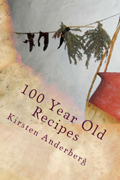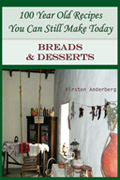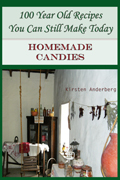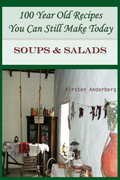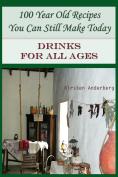Kirsten Anderberg's URBAN ADVENTURES:
Olivas Adobe in Ventura, CA
"Many plants familiar from Spain were grown by the Californios, thanks to botanical knowledge of the Spanish padres, who recognized the similarity between the CA coast and
much of Spain. But the settlers also hungered for the things they had learned to love in Mexico, the tomatoes, chilis, squash, pumpkin, and corn. The blend of Spanish and Mexican merged
into Californian. In time, the Californios, particularly the rancheros, thought of their style, and themselves, as a separate one." - Jacqueline Higuera McMahan (from the famous Higuera family
that inhabited Rancho Los Tularcitos for almost 130 years), "California Rancho Cooking: Mexican and Californian Recipes" (2003)
I will be posting more history of the Olivas Adobe shortly...

 A bedroom, with altar in wall, at Olivas Adobe (Photo: K. Anderberg 2009)
A bedroom, with altar in wall, at Olivas Adobe (Photo: K. Anderberg 2009)
 Bedroom altar in wall at Olivas Adobe (Photo: K. Anderberg 2009)
Bedroom altar in wall at Olivas Adobe (Photo: K. Anderberg 2009)
 Adobe wall at Olivas Adobe (Photo: K. Anderberg 2009)
Adobe wall at Olivas Adobe (Photo: K. Anderberg 2009)
 Upstairs church in Olivas Adobe. Once a month, or more, a padre from the Mission came to the rancho to give Mass in this church for family members and friends. (Photo: K. Anderberg 2009)
Upstairs church in Olivas Adobe. Once a month, or more, a padre from the Mission came to the rancho to give Mass in this church for family members and friends. (Photo: K. Anderberg 2009)
 Olivas Adobe kitchen (Photo: K. Anderberg 2009)
Olivas Adobe kitchen (Photo: K. Anderberg 2009)
 View of the top floor of the Olivas Adobe (Photo: K. Anderberg 2009)
View of the top floor of the Olivas Adobe (Photo: K. Anderberg 2009)
 This beautiful crank organ was a prized possession of the Olivas family. They showed it to all the guests that came to visit. It plays a wonderful assortment of tunes as
the figures move about. A man who was a watch repairman comes in once a month to keep it in working shape. (Photo: K. Anderberg 2009)
This beautiful crank organ was a prized possession of the Olivas family. They showed it to all the guests that came to visit. It plays a wonderful assortment of tunes as
the figures move about. A man who was a watch repairman comes in once a month to keep it in working shape. (Photo: K. Anderberg 2009)
 Wall gate at Olivas Adobe, looking out to the fountain and rose garden, and golf course, beyond...(Photo: K. Anderberg 2009)
Wall gate at Olivas Adobe, looking out to the fountain and rose garden, and golf course, beyond...(Photo: K. Anderberg 2009)
 In front of the Olivas Adobe is one of the oldest, and biggest, fuschia plants in the world. It was planted by a member of the Olivas family. (Photo: K. Anderberg 2009)
In front of the Olivas Adobe is one of the oldest, and biggest, fuschia plants in the world. It was planted by a member of the Olivas family. (Photo: K. Anderberg 2009)
 The children's room...(Photo: K. Anderberg 2009)
The children's room...(Photo: K. Anderberg 2009)
 The back wall of the Olivas Adobe compound. Ranchos in the mid-1800's looked like forts because this was the wild west and there was a criminal element
about, and thus people used adobe fort-like walls for protection of their home, family and property. (Photo: K. Anderberg 2009)
The back wall of the Olivas Adobe compound. Ranchos in the mid-1800's looked like forts because this was the wild west and there was a criminal element
about, and thus people used adobe fort-like walls for protection of their home, family and property. (Photo: K. Anderberg 2009)
Thank you to Resist.ca for hosting this website!



